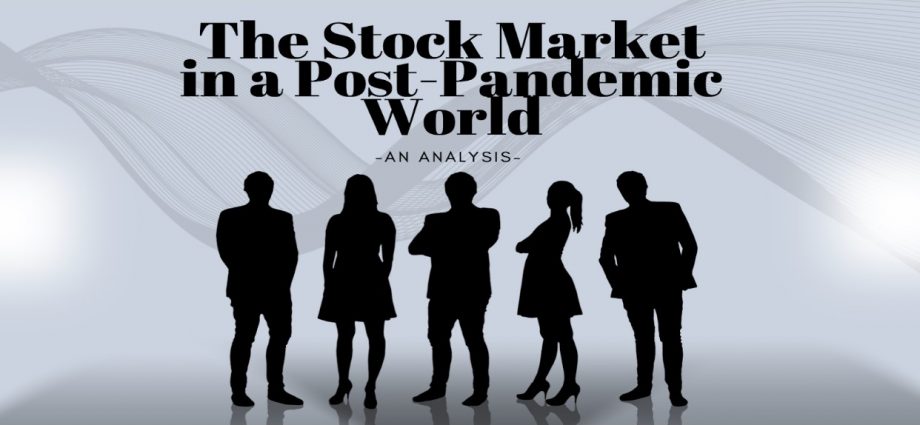Author: Aditi Somayajula, Graphics: Acasia Giannakouros
The BRB Bottomline:
Among other factors, the distribution of some $5 trillion of pandemic stimulus likely urged the Federal Reserve to enact monetary policy to counter inflation. As we economically navigate the post-pandemic world, investors are called to consider the implications for the stock market.
The saying goes that amidst the everyday ups and downs of the market, there are only a few significant moments in the lifetime of an investor. Since the beginning of the pandemic, however, Wall Street forecasts have seemed to suggest differently. Market analyses during the past couple of years have reported an unusual pattern of one unprecedented moment after another. In fact, the most recent financial trends are themselves quite telling — a sudden departure from the high market performance of the past year, the last few months have served as a brutal reminder of the brevity of bull markets.
That reminder comes and goes with some regularity, but what is particularly different about this moment is the context. And as the aftereffects of the pandemic materialize both financially and economically, investors are called upon to evaluate the current bearishness of the market and its long-term implications.
An Economic Background
During the financial uncertainty of the COVID-19 pandemic, the federal government enacted legislation that funneled around $5 trillion worth of stimulus directly into the economy. Of that amount, direct deposits into both personal and business-operated bank accounts accounted for nearly $1 trillion. As a result, unprecedented sums of cash flooded the money supply, consumer spending grew considerably, and the valuation of assets surged.
In September 2022, nearly one and a half years after the final government stimulus, the annual inflation rate in the United States was reported to be an unsustainable 8.2%. While the relationship between the stimulus checks and inflation cannot be simply attributed to linear cause-and effect — it is important to acknowledge the contributing impact of vast supply chain failures, the Russian invasion of Ukraine, and other commodity shocks — the Federal Reserve was nonetheless forced to enact several reactionary measures. The Fed issued seven consecutive hikes on the federal fund rate in 2022, an interest rate that establishes the price of overnight borrowing between financial institutions and has overarching ripple effects on various facets of the economy.
A Focus on the Stock Market
One of those effects has immediate implications for the stock market. The complete relationship is a little more complicated, but effectively, interest rate hikes by the Fed serve to raise the price of borrowing money. And as stocks, much like any other asset, can be bought on margin, the inflation of the federal funds rate amplifies the price of stock purchases.
The volatility of the stock market is largely an effect of rapidly evolving investor sentiment; thus, when decisions by the Fed are not in the interest of investors, share prices are quick to reflect that. In 2022, that adjustment was notably drastic; the S&P 500 index, often considered to be a benchmark for American market performance, observed a decline of 23% between January and July.
An Unpredictable Environment
The reactionary nature of the Fed can be expected; however, what remains to be seen is the extent to which financial tightening continues to occur. If the Fed continues to have to issue rate hikes, then investors might be forced to consider the possibility of bearishness in the long haul.
At the same time, however, it is possible that change will come sooner than anticipated. The Fed remains hawkish and, according to many estimates, the fight against inflation will remain for the foreseeable future. Nevertheless, the Fed has been successful in initially easing high rates. In addition, political factors such as the recent midterm elections, as well as the approaching end of Biden’s first-term will be a large determinant of how fiscal policy interacts with monetary policy in the coming years. If social programs such as student loan forgiveness and infrastructure overhauls coexist with financial tightening efforts of the Fed, then attempting to foresee the behavior of the stock market becomes considerably more challenging.
As we continue to navigate the aftermath of the global pandemic, investors will likely be urged to tolerate some market volatility for the foreseeable future. And as the efforts of the Fed continue to transpire, expecting an unexpected market environment may very well define the next few years.
Take-Home Points
- During the pandemic, the federal government enacted legislation that transferred some $5 trillion worth of stimulus directly into the economy.
- The Federal Reserve recently implemented its fifth consecutive hike of the federal funds rate, an attempt to mitigate the effects of inflation.
- If emergency monetary policy persists, investors may be forced to consider the possibility of long-term bearishness.
- The results of the midterm elections in November will likely influence how monetary and fiscal policy interact, possibly ensuing some market unpredictability in the long-term.

